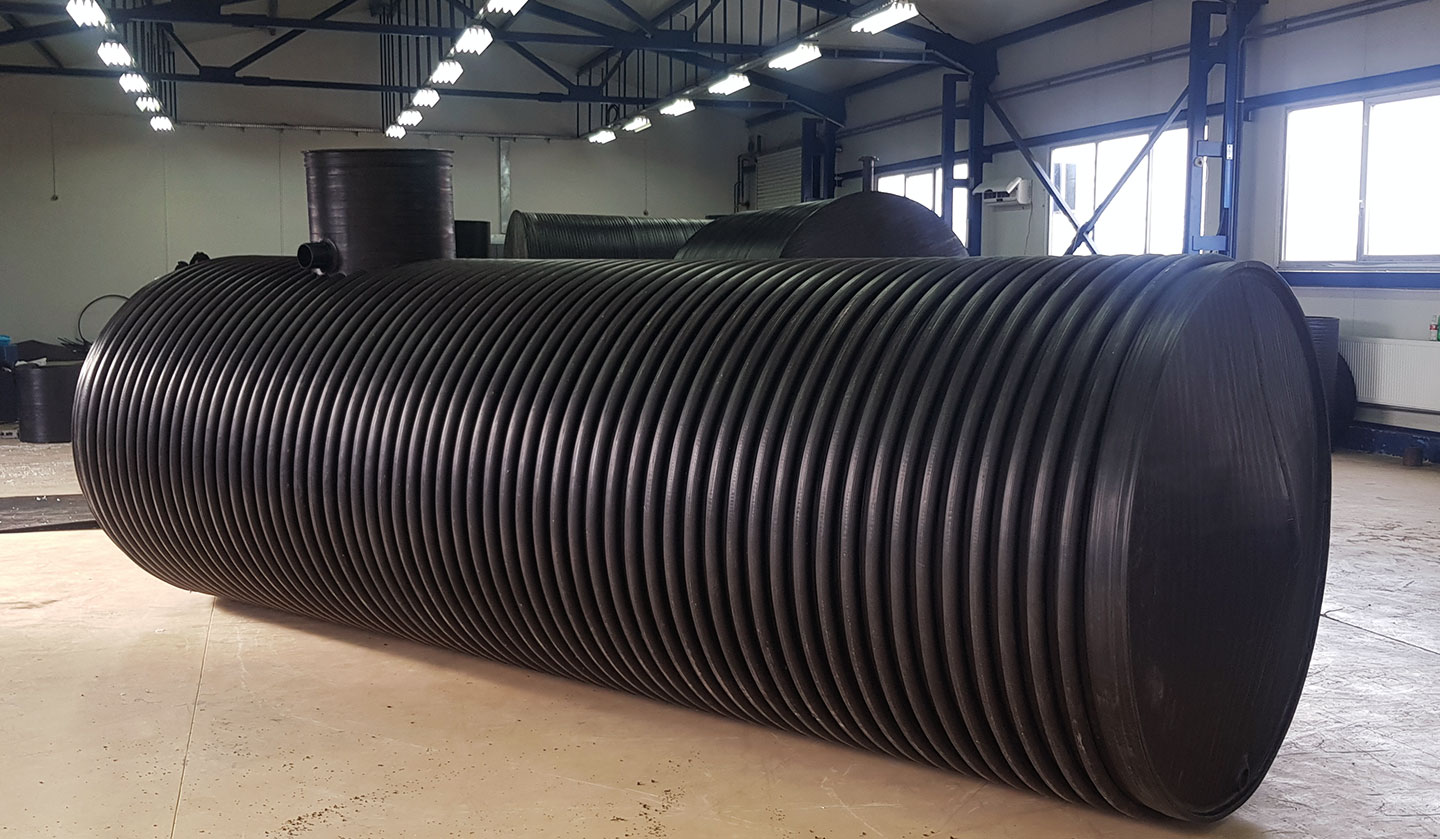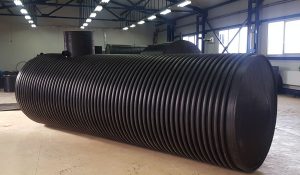Are you familiar with the function and types of polyethylene septic tanks? Do you know what septic tanks are used for? The variety of polymer products and the fields of their use are expanding more and more. Some types of polyethylene products have been welcomed by various people and industries due to their practical features and significant advantages, including septic tanks. If you want to get more information about septic tanks made of polyethylene and how they work, follow us to the end of this article.
Introduction of polyethylene septic tank
Polyethylene septic tank is a tank made of heavy-duty HDPE polymer that is responsible for storing and converting absorbable wastewater into the well. The inner chamber of the septic tank is divided into two unequal sections for storing wastewater and treated effluents. In general, about 70% of the septic tank capacity is used for wastewater accumulation.
Types of polyethylene septic tanks are designed and manufactured with the latest technologies in the world and in the form of engineering. It should be noted that septic tanks are one of the simplest and at the same time the most widely used types of polyethylene tanks. It goes without saying that polyethylene septic tank tanks are also popularly known as “Gand Anbar”.
Application of polyethylene septic tank
Polyethylene septic tanks are mainly used in residential houses, whether apartments or villas, commercial complexes, hotels and leisure centers, workshops and manufacturing plants, and many other centers. The most common use of polyethylene septic tanks is in areas with sewage piping problems.
Note that the installation of various types of polyethylene septic tanks is done in a burial and it is possible to install several tanks together (observing the distance and standard installation principles) in a common cavity. It is very important to pay attention to points such as the depth of the hole for burying the septic tank, checking the soil pressure, soil type of the burial tank and observing the installation steps exactly according to the standards stated in the warranty.
In some cases, these reservoirs are also used to store rainwater. Rainwater is suitable for watering plants, car washing and many other things due to the lack of organic matter in drinking water. In addition to wastewater treatment, water storage in the septic tank is also used for drip irrigation.
It is interesting to note that applying some key changes to the structure of the septic tank hull significantly increases the efficiency of these products.
Advantages of polyethylene septic tank
No need to make large holes in the tank body (like concrete tanks) is one of the top advantages of septic tanks. Having a hole with a lid and the right size in the body of the septic tank, in addition to faster installation and the need for less coverage, also significantly reduces the side costs of the installation process.
The absence of a porous body (multiple pores) in the septic tank of polyethylene tanks makes it almost impossible for the roots of plants and trees to penetrate into this type of reservoirs. In some reservoirs, the entry of plant roots into the cavities and overgrowth and fractures in the body cause irreparable damage. However, septic tanks and other polyethylene tanks are not immune to these damages; But such cases are rare in them.
Light weight is another advantage of septic tanks. This advantage makes it easier to move and install the septic tank tanks from one point to another. In general, the cost of septic tank tanks is very affordable compared to other tanks, both metal and concrete. On the other hand, the possibility of maintenance and costs associated with the need for possible repair of the septic tank is simple and convenient.
Polyethylene septic tanks have a very high resistance to damage caused by exposure to wastewater and harmful gases (methane and hydrogen sulfide). The generation of harmful and harmful gases due to long-term accumulation of wastewater in an enclosed space increases the possibility of damage to tanks, which is excluded from the septic tank of polyethylene tanks. We remind you that installing and using different types of septic tanks made of polyethylene for wastewater storage is a cost-effective and smart task.
Installation or repair of fittings in polyethylene septic tanks is easier than other tanks. Fixing metal or concrete tank connections is done using cement or concrete, while you do not need to do this to install polymer tank connections, especially polyethylene septic tanks. Due to the above, the easy installation process can be mentioned as another advantage of septic tanks made of polyethylene.
It is possible to install a polyethylene septic tank in any place without considering temperature changes (polyethylene tanks have a very high resistance to cold and heat). You can also install your polyethylene septic tank tanks in mountainous, hilly, cold and tropical areas.
جهت سفارش و خرید دستگاه کارواش بخار روی لینک کلیک کنید.



